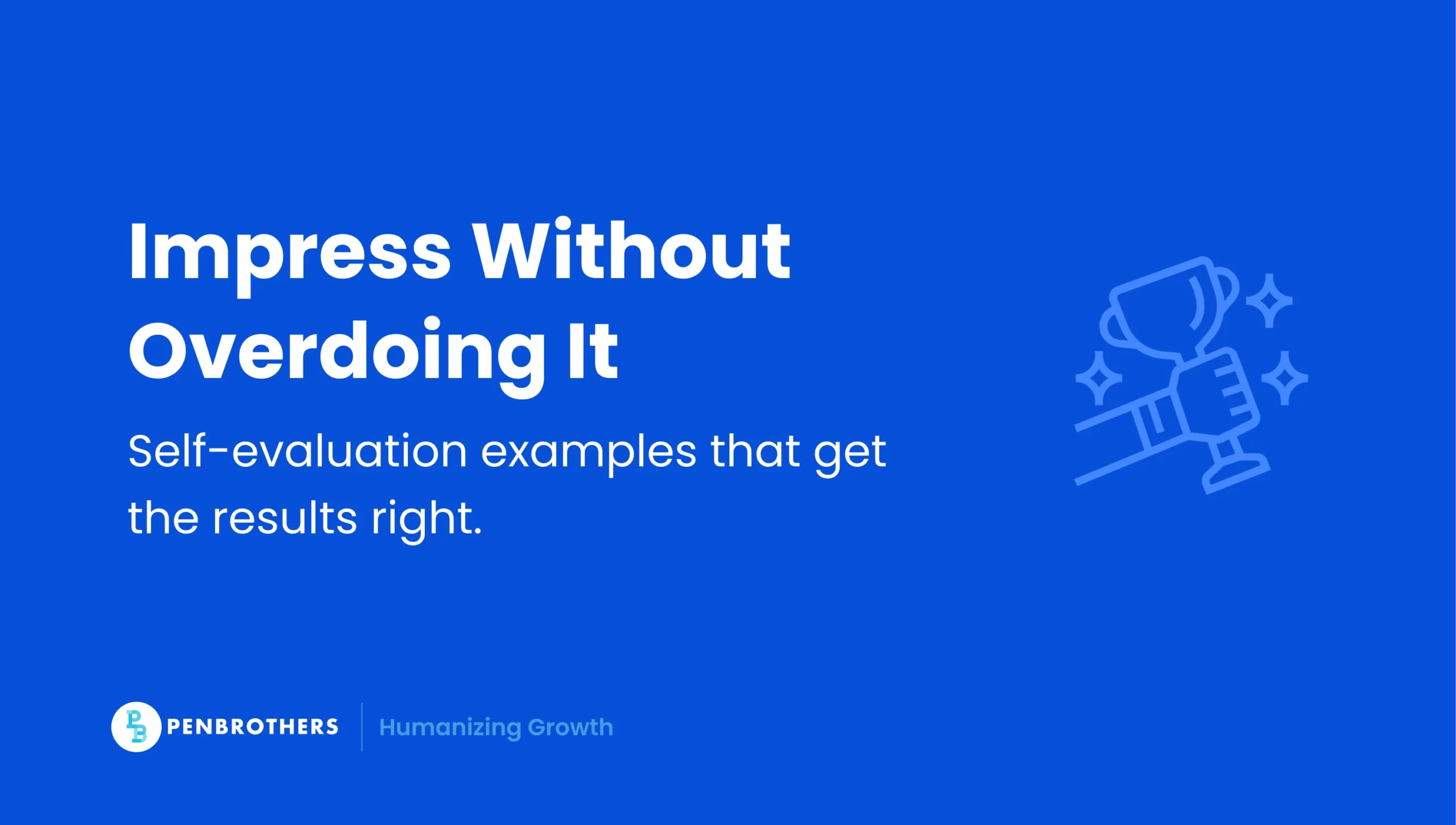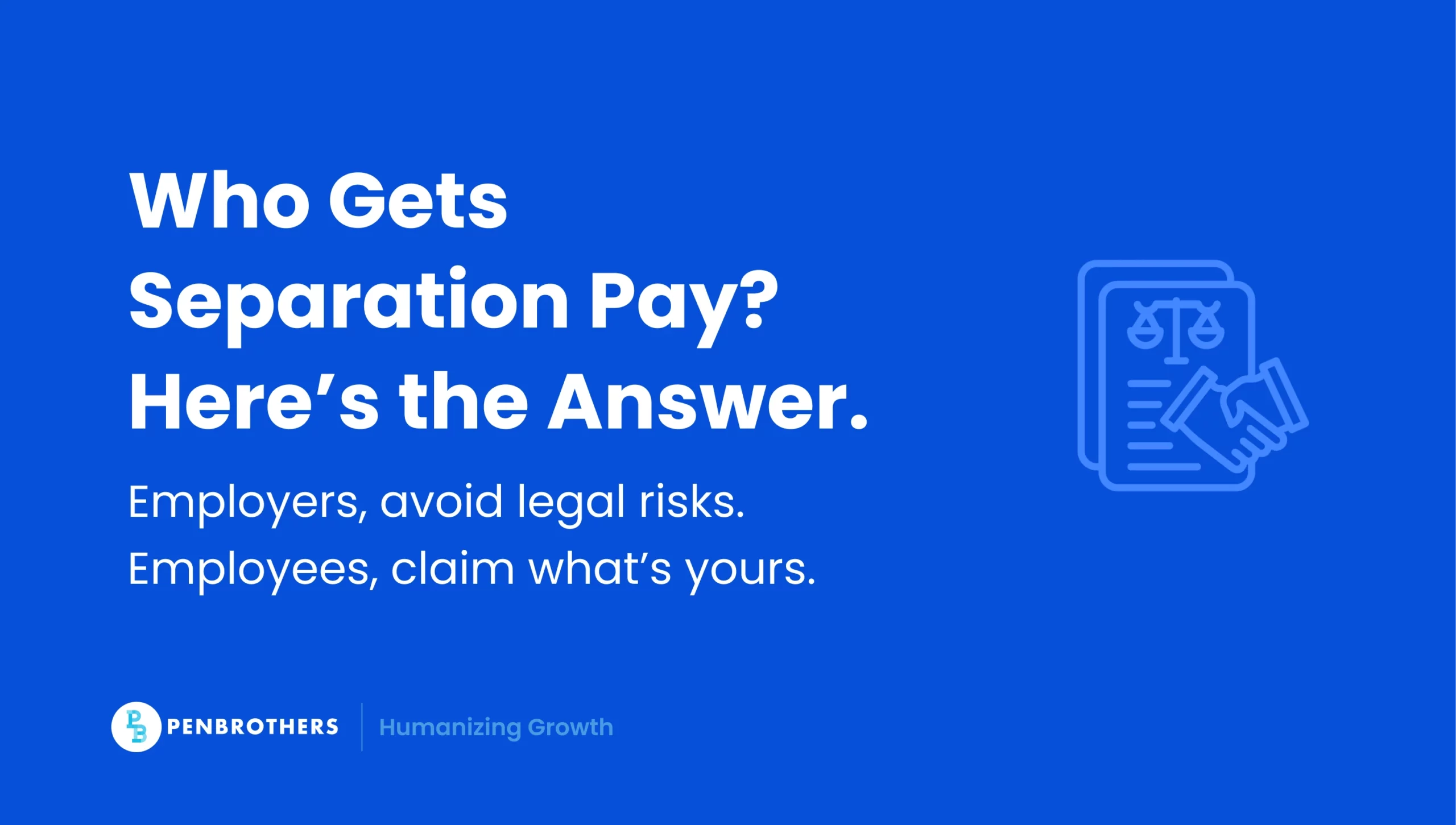What's Inside?
Self Evaluation Examples: 10 Powerful Answers to Stand Out

Self-evaluations are often seen as obligatory HR paperwork, but in reality, they hold the power to reshape careers. They’re not just performance summaries. They’re strategic tools to reclaim your narrative, highlight unseen wins, and flag untapped potential. In an era where quiet contributions often go unnoticed, a well-written self-evaluation can help you stand out for the right reasons.
This article goes beyond the typical templates. You’ll get 10 powerful self-evaluation examples across performance, collaboration, leadership, problem-solving, and professional development, along with industry-specific samples. We’ll also cover how to set meaningful goals, avoid common mistakes, and incorporate feedback to make your self-evaluation a growth catalyst, not just a checklist. Let’s redefine how you talk about your impact.
Key Takeaways
- It’s a Strategic Tool, Not Just HR Paperwork: A self-evaluation is a critical opportunity to control your professional narrative, document your accomplishments, and advocate for your career growth. It directly influences decisions regarding promotions, compensation, and future opportunities.
- Focus on Impact, Not Activity: The most common mistake is simply listing job duties. A powerful self-evaluation moves beyond tasks to demonstrate outcomes. Instead of saying what you did, explain what changed because of your work, using data to quantify your impact.
- Use Data and Specific Examples: Vague statements are ineffective. Strengthen your evaluation by using concrete metrics. For example, instead of “I was more productive,” write “I streamlined internal reporting by automating dashboards, cutting report prep time by 40%.”
- Show Self-Awareness and Future Focus: A credible evaluation acknowledges challenges and areas for improvement. It should conclude with clear, forward-looking SMART goals that align with company objectives, positioning you as a proactive and growth-oriented professional.
What is a Self-Evaluation?
A self-evaluation is a formal opportunity to reflect on your professional contributions, challenges, and growth over a specific period. It’s your version of the story told with strategy and clarity.
Unlike performance reviews that are manager-led, self-evaluations give you the floor. They allow you to challenge assumptions, clarify your role’s complexity, and advocate for your next opportunity.
By treating this as more than a routine HR task, you can shift your positioning from task-doer to impact-driver, a critical reframe for promotions, raises, and role transitions.
Why Should You Write a Self-Evaluation?
Because if you don’t control your narrative, someone else will. And they won’t tell it as well as you can.
Your manager oversees 8-12 people. They remember maybe 30% of what you did this year, usually the most recent or most problematic work. That breakthrough solution you created in February? Forgotten. The process improvement that saved thousands? Attributed to “the team.” Your self-evaluation ensures your actual contributions get recognized, not just what’s top of mind.
Self-evaluations directly influence compensation decisions, and without this documentation, even supportive managers struggle to advocate effectively. This document becomes your career insurance policy. When reorganizations happen, when new managers arrive, when layoff discussions begin, your self-evaluation history proves your value.
Beyond defense, self-evaluations accelerate advancement. They force you to articulate your growth from individual contributor to strategic thinker. When you write “I evolved from executing campaigns to designing our entire content strategy,” you’re planting seeds for your next role. Managers start seeing you differently. Opportunities mysteriously appear.
The psychological benefit is underrated. Writing your achievements combats imposter syndrome with evidence. That voice saying you’re not good enough gets quieter when you have documented proof of your impact. This confidence boost affects your daily performance, creating a positive cycle of achievement and recognition.
Here’s what most people miss: self-evaluations are practice for executive communication. Learning to summarize complex work, quantify soft impacts, and connect tactical work to strategic goals—these are VP-level skills. Every self-evaluation you write is a rep toward senior leadership capability.
How to Write a Self-Evaluation: A Strategic Breakdown
Writing a strong self-evaluation isn’t about listing everything you did. It’s about curating what matters most, backed by data and framed for growth.
Introduction:
Start with a confident tone. Acknowledge major wins and contextualize them within broader business goals. Signal self-awareness early.
Body:
Break this into key categories: strengths, development areas, and contributions. Use specific, measurable examples. Always tie actions to outcomes. What changed because of your work?
Conclusion:
End with forward motion. Outline clear goals and explain how you’ll build on the current momentum. This frames you as proactive, not reactive.
A great self-evaluation doesn’t just reflect; it reframes. It’s your chance to own your performance narrative before someone else does.
Related: How to negotiate your salary increase and get a yes!
10 Powerful Self-Evaluation Examples
Performance-Driven
1. Task Completion and Deadlines
“I consistently met 98% of my project deadlines this year, including launching a client onboarding workflow two weeks ahead of schedule. By proactively flagging bottlenecks, I reduced average delivery time by 12% across the team.”
Why this stands out: It’s data-driven, reflects initiative, and shows systems thinking.
2. Productivity and Efficiency
“I streamlined internal reporting by automating Excel dashboards, cutting report prep time by 40%. This allowed more focus on strategic analysis.”
Pro tip: Pair time savings with what that freed-up capacity was used for. This highlights ROI.
Collaboration and Teamwork
3. Team Contribution and Communication
“I initiated bi-weekly check-ins that improved alignment across cross-functional teams, reducing miscommunication-related delays by 20%.”
Insight: Facilitating collaboration is a leadership behavior, even without a title.
4. Adaptability in Team Settings
“When our team lead went on sudden leave, I stepped in to manage project timelines without disruption. This experience strengthened my ability to lead under pressure.”
Advanced angle: Reflect on what this situation taught you about your resilience and leadership potential.
Related: If you’re looking for a new job, master mock interviews.
Leadership and Management Skills
5. Leadership and Delegation
“I led a 4-person subteam during our Q3 product sprint, delegating tasks based on skill strengths and reducing our backlog by 35%.”
Elevate it: Add what you learned about team dynamics or accountability in remote settings.
6. Conflict Resolution and Motivation
“When tensions arose over overlapping roles, I facilitated a role clarification session that improved trust scores on our team pulse survey by 15%.”
Leadership nuance: This goes beyond resolution. It touches on long-term engagement.
Problem-Solving and Innovation
7. Creative Problem-Solving
“Faced with rising support tickets, I designed a self-help FAQ system that reduced low-priority tickets by 30% and improved customer response time.”
Standout factor: Solves a problem before being asked. This is promotable behavior.
8. Troubleshooting and Efficiency Improvements
“I analyzed recurring bugs and proposed a test automation plan, decreasing bug recurrence by 22% over two quarters.”
Insight: Data + proactive solutions = influence beyond your job description.
Professional Development and Self-Improvement
9. Commitment to Learning and Growth
“I completed a Data Analytics certification and applied those skills to optimize our A/B testing approach, resulting in a 10% uplift in conversion rates.”
Key lens: Certifications are only valuable when directly applied to business outcomes.
10. Goal Setting and Personal Development
“My goal was to improve stakeholder communication. I implemented weekly summary reports and received direct praise from two department heads on improved visibility.”
Advanced twist: Connect soft skill improvement with tangible business impact.
Related: Master answering interview questions that go beyond the STAR method.
Industry-Specific Self-Evaluation Examples
Tech Industry
1. Software Development & System Improvements
“Refactored legacy code that reduced loading time by 1.8 seconds, significantly improving user experience on mobile.”
2. Adaptability to New Technologies
“Quickly learned and applied Kotlin for Android development, shortening our development cycle by 2 weeks on the Q2 app release.”
Sales Industry
1. Sales Targets and KPIs
“Exceeded quarterly quota by 18%, the highest in the region, through personalized prospecting strategies and product upselling.”
2. Customer Relationships and Retention
“Maintained a 96% customer satisfaction rate by launching a post-sale check-in process that reduced churn.”
Marketing Industry
1. Content Strategy and Engagement
“Led a blog overhaul that boosted organic traffic by 35% YoY and doubled email opt-ins through SEO and content clustering.”
2. Brand Awareness and Social Media Growth
“Grew our LinkedIn following by 45% in six months via data-led content planning and community interaction campaigns.”
Each example is designed to show alignment with business outcomes, a common gap in many self-evaluations.
Setting Goals for Improvement in Self-Evaluations
Goal-setting turns reflection into direction. To make goals effective, use the SMART framework:
- Specific: What exactly will you achieve?
- Measurable: How will you track progress?
- Achievable: Is it within reach with current resources?
- Relevant: Does it align with team/company goals?
- Time-bound: What’s the deadline?
Example:
“By Q3, I will improve internal reporting accuracy by 20% by introducing a peer-review step in the workflow.”
Great self-evaluations don’t just recount what happened. They point clearly to what’s next, with purpose.
Integrating Feedback into Your Self-Evaluation
Evaluations shouldn’t live in a vacuum. Feedback from peers, managers, and even clients can provide depth and credibility.
Use phrases like:
- “Based on feedback from my team…”
- “According to my last 1:1…”
Even constructive criticism can be reframed as development momentum, not weakness.
Related: Know the 7-step interview preparation to get a new job.
Common Mistakes to Avoid in Self-Evaluations
Many professionals sabotage their careers by falling into predictable, avoidable traps. Here’s how to avoid sounding like just another name in a stack of forms:
Mistake 1: Vague, Self-Congratulatory Language
What it sounds like:
“I think I performed well and contributed to the team.”
Why does this fail?
This says nothing. It lacks metrics, impact, and credibility. A performance review isn’t the place for soft summaries. Use measurable outcomes instead.
Mistake 2: Glossing Over Weaknesses or Challenges
What it sounds like:
“Everything went smoothly this quarter.”
Why does it fail?
It signals a lack of self-awareness or, worse, defensiveness. Strong performers own their growth areas and show they know how to course-correct.
Mistake 3: Misaligned or Isolated Goals
What it sounds like:
“I focused on improving my own workflows.”
Why does it fail?
If your goals don’t tie into business objectives, team OKRs, or strategic priorities, they’ll feel disconnected and won’t hold weight during evaluations.
Mistake 4: Listing Tasks Instead of Outcomes
What it sounds like:
“Attended weekly stand-ups, completed assigned reports, and collaborated with cross-functional teams.”
Why does it fail?
Listing tasks shows activity, not impact. You’re not applying for the job again; you’re proving your growth and results.
Own Your Narrative Before Someone Else Does
Your self-evaluation is more than an HR requirement. It’s a leadership exercise. The strongest professionals don’t wait for recognition. They communicate their value with precision and humility.
By using the examples and frameworks in this guide, you’ll not only highlight your contributions but shape the direction of your career. Be honest. Be specific. Be intentional.
Use these powerful self-evaluation examples to take your career to the next level just like Jitka.
Check out open roles with competitive salaries and flexible work set-up.
Download Self-evaluation Template and Checklist
Frequently Asked Questions
It allows you to control your professional narrative. Since your manager may not recall all your specific contributions over a review period, this document ensures your achievements are officially recorded, which directly influences decisions about your compensation, promotions, and future roles.
The most common and significant mistake is listing tasks instead of outcomes. Describing your job duties shows activity, but not impact. A strong evaluation must focus on the results you delivered and the value you created for the team and the business.
Address them honestly to demonstrate self-awareness. Frame them as development opportunities rather than failures. You can mention constructive feedback you have received and then present a clear, actionable goal for how you plan to improve in that specific area.
A strong structure includes:
An introduction with a confident tone that highlights a major win.
A body that details your key contributions and strengths using specific, data-backed examples.
A conclusion that is forward-looking and outlines clear SMART goals for your professional development.
Use data and specific metrics to quantify your impact whenever possible. Always connect your actions to a tangible business outcome. For example, instead of saying you “worked on a blog,” state that you “led a blog overhaul that boosted organic traffic by 35% YoY.”
*This article was crafted with the support of AI and refined by a human editor.





